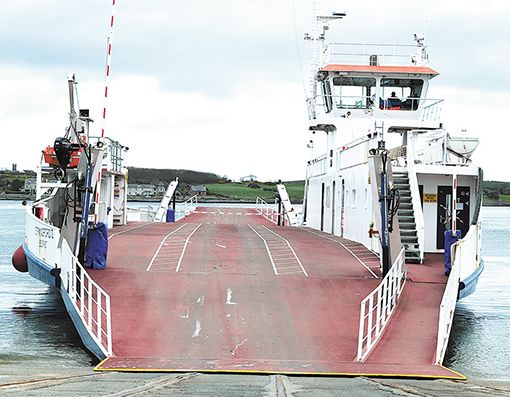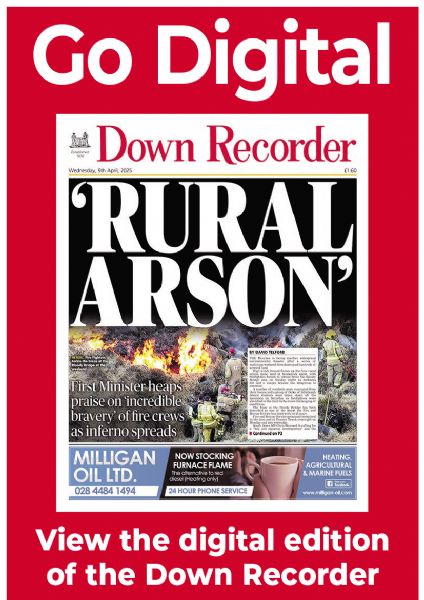Strangford ferry crew threaten strike action
Strangford ferry crew threaten strike action
25 August 2021

STRANGFORD ferry personnel could go on strike over health and safety concerns.
Crew members say exhaust fumes are posing a health risk to themselves and passengers, including children.
Their concerns relate to the MV Strangford II, which entered service in 2017 and is one of two ferries operating on the route between Strangford and Portaferry.
The trade union Unite has called for an independent risk assessment to be carried out to address the crew’s concerns.
The Department for Infrastructure, which is responsible for the ferry service, said that an independent environmental specialist had found emissions to be within acceptable limits.
A spokesperson said the Department was taking additional steps to further improve air quality by installing diesel particulate filters.
Joanne McWilliams, regional officer for Unite, described the measure as “stop-gap”.
She said: “Our members who operate the ferry service between Strangford and Portaferry have been raising health and safety concerns in relation to the Strangford II vessel since it came into service four years ago. They have given the department time to resolve them but our concerns remain.
“Workers have documented how the engine and generator exhaust pipes on the Strangford II release noxious fumes at water level, which means in adverse conditions they can congregate on deck and in workplaces.
“This contrasts with the situation on the Portaferry II where exhaust stacks release fumes high up, meaning this risk is avoided. Those who work on the vessels have repeatedly reported reporting dizziness, headaches and chest conditions as a result of the fumes.”
Ms McWilliams said Unite wrote to Infrastructure Minister Nichola Mallon seeking a meeting to discuss the issue and to highlight the concerns of crew members.
“To date no meeting has been arranged,” she continued. Instead the minister’s response reiterated the stopgap measure of installing a diesel particulate filter on the Strangford II, a promise made in May 2020 by ferry management – with no indication of a time frame even for that inadequate measure.
“The Strangford-Portaferry service plays a vital role in the local economy facilitating commuters, freight, schoolchildren, tourists and staycationers. In 2019 passenger numbers for the service was more than 600,000.
“The workers are demanding Minister Mallon intervene immediately to organise a fresh risk assessment of the exhaust fumes on the Strangford II, that this be carried out by an independent assessor and that it is extensive and involves discussion with crew.
They further request that she commit to install an exhaust stack similar to that on the Portaferry II and that pending this safety measure, or the full-scale electrification of the vessel, that the Strangford II ferry is only used in emergencies.
She added: “Unite recently held a consultative ballot of our members, who constitute the overwhelming majority of those working on this service, in which 100% voted indicating a willingness to strike.
“They are determined to end this long-running concern about the safety of themselves and to the passengers, in particular the school children who use this service twice a day.”
A spokesperson for the Department of Infrastructure said: “The Department takes the welfare of both staff and passengers very seriously, so in response to concerns about exhaust fumes the Department employed an independent environmental specialist to undertake air quality and personal exposure monitoring.
“These tests found the air quality on board the MV Strangford II to be within the permissible workplace limits, and to provide reassurance, the environmental specialist presented their findings to the crews.
“While the emissions are within acceptable limits the Department is taking additional steps to further improve air quality by installing diesel particulate filters.”
The spokesperson added: “A further assessment of air quality on board will be undertaken after the diesel particulate filters are installed to ensure they are effective.
“The Department is also currently considering options for a transition to a low-carbon ferry service, and electrification of the ferries along with other potential technologies are being investigated.”


